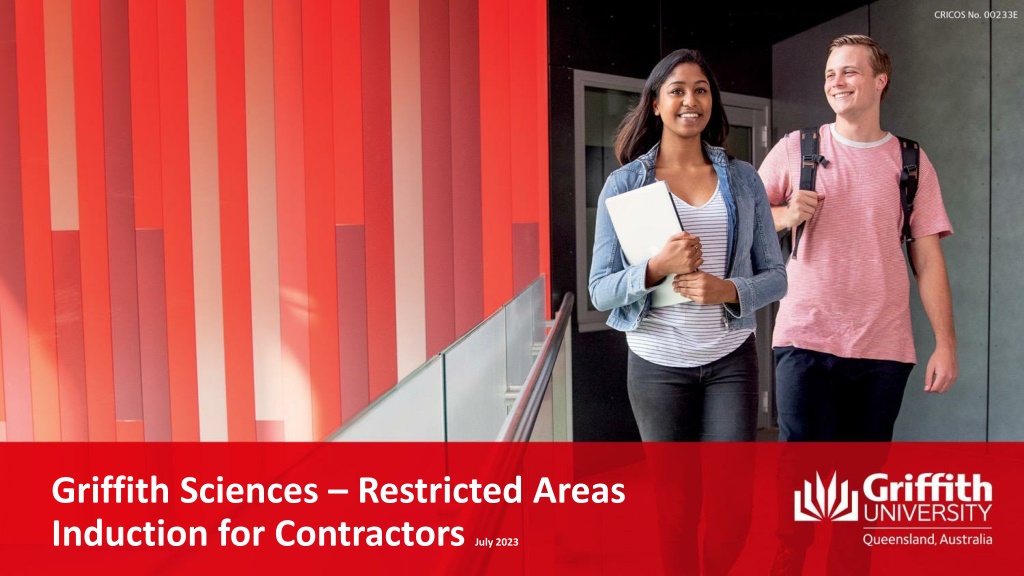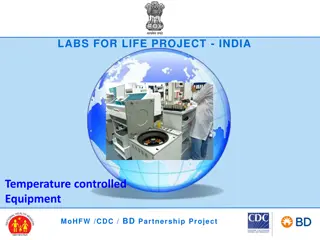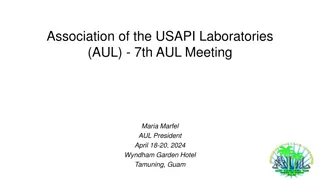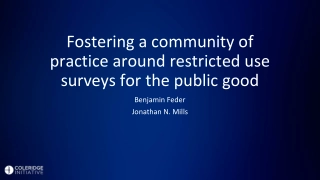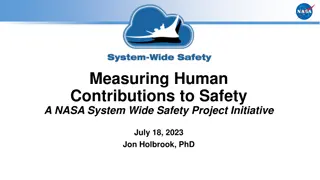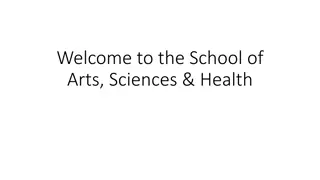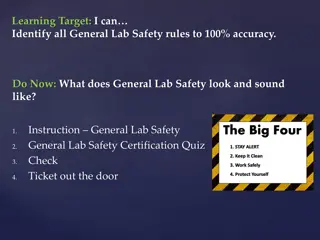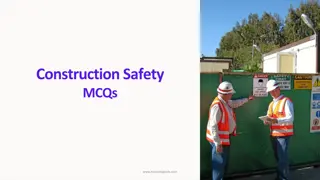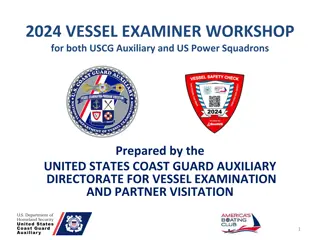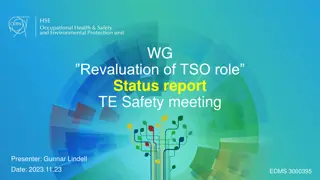Safety Guidelines for Restricted Areas and Laboratories at Griffith Sciences
Griffith Sciences has strict protocols in place for accessing restricted areas, including obtaining necessary permissions and adhering to Access Risk Levels. The guidelines emphasize the importance of safety measures in laboratories, such as wearing appropriate PPE, following specific rules, and seeking guidance from laboratory managers. Failure to comply may result in removal from campus. It is crucial to prioritize safety and follow all signage and regulations to ensure a secure work environment.
Download Presentation
Please find below an Image/Link to download the presentation.
The content on the website is provided AS IS for your information and personal use only. It may not be sold, licensed, or shared on other websites without obtaining consent from the author. Download presentation by click this link. If you encounter any issues during the download, it is possible that the publisher has removed the file from their server.
Presentation Transcript
Griffith Sciences Restricted Areas Induction for Contractors July 2023
Restricted Areas (1 of 3) Do not enter prohibited or restricted areas without prior written approval from your Campus Contact and the permission of the Facility Manager. Entering without permission may result in your removal from campus. You must abide by all signage related to Restricted Areas or where No unauthorised entry signs are displayed. Restricted areas include areas with lasers and chemical or biological hazards. These areas will have Access Risk Levels (ARL) of: ARL 1: No notification required ARL 2: Notification required ARL 3: Notification and supervision required Typical minimum notification periods are 5 business days, however, where necessary, shorter periods may be negotiated with the Facility Manager. ARL information for spaces can be obtained from your Campus Contact.
Restricted Areas (2 of 3) Do not enter ARL 2 or 3 areas without prior written notification to Facility Managers, and do not enter ARL 3 areas without scheduling supervised access with the Facility Manager. Entering without permission may result in your removal from campus. Notification of entry may result in the requirement to undertake a local site induction. The Facility Manager will advise you if this is the case. Only access the areas of the campus that you need to be in for the work you are doing. If the work that you are undertaking at the university requires the area to be deemed restricted access , ensure that adequate signage is displayed, and appropriate barriers are in place to ensure the safety of the public, staff and students.
Restricted Areas (3 of 3) A Mandatory Facility Entry Requirements form is displayed at the access point to all restricted areas. Check the Access Risk Level and entry requirements here If you are unsure about the access requirements for a restricted area, then contact your Campus Contact.
General Laboratory Rules Only authorised persons are allowed into laboratories. Never eat, drink, smoke or apply cosmetics Enclosed shoes must be worn at all times Wash hands when leaving at handwash stations with hand wash supplied If you feel any abnormal health effects (shortness of breath, dizziness, heart palpitations) notify laboratory staff immediately Do not isolate services (e.g., power, water, gas) without prior notification to laboratory manager Keep clear of automated equipment Do not interfere with any experiments, or touch laboratory equipment/surfaces (e.g., benches, shelving, cabinet tops) Do not open fridges, freezers, or cupboards Do not wedge doors open Do not let other people into the lab Do not use mobile phones The use of headphones or ear pods is prohibited If there are active experiments in the lab, verify with the laboratory manager that it is safe for you to work in the space; PPE (e.g., lab coats, eyewear) may need to be provided Additionally, there are other rules which are specific to certain spaces. These are listed in below slides
Areas with Laser Hazards Do not enter any cordoned or curtained area unless accompanied by an authorised member of staff Laser radiation is typically in a horizontal plane at waist height. Ensure your eyes are closed when bending over or standing up Reflective surfaces (including tools, jewellery) should be kept clear of laser beam lines Avoid dust-generating activities as this can damage laser equipment
Areas with Chemical Hazards Avoid any spills; notify the laboratory manager immediately of any unattended spills Avoid using spark sources within 3m of a Class 3 (i.e., flammable) dangerous goods cabinet Detection of any odours should be notified to the laboratory manager
Areas with Biological / Physical Containment Hazards Minimise tools/equipment that are brought into the space Avoid setting down of tools/equipment onto laboratory surfaces Tools/equipment should be decontaminated prior to exiting space Avoid any spills; notify the laboratory manager immediately of any unattended spills Consult with the laboratory manager for disposal of waste products generated
Areas with Radiation Hazards All spaces with radiation hazards are ARL 3 and require supervised access Minimise tools/equipment that are brought into the space Avoid setting down of tools/equipment onto laboratory surfaces Tools/equipment should be decontaminated prior to exiting space Avoid any spills; notify laboratory manager immediately of any unattended spills Consult with laboratory manager for disposal of waste products generated
Areas with potentially hazardous atmospheres Types of hazardous atmospheres Explosive atmospheres Oxygen depleted atmospheres Toxic atmospheres These atmospheres are not the norm in Griffith Sciences spaces and only occur due to failure of a control Do not enter areas where gas monitoring systems are in an alarm state
